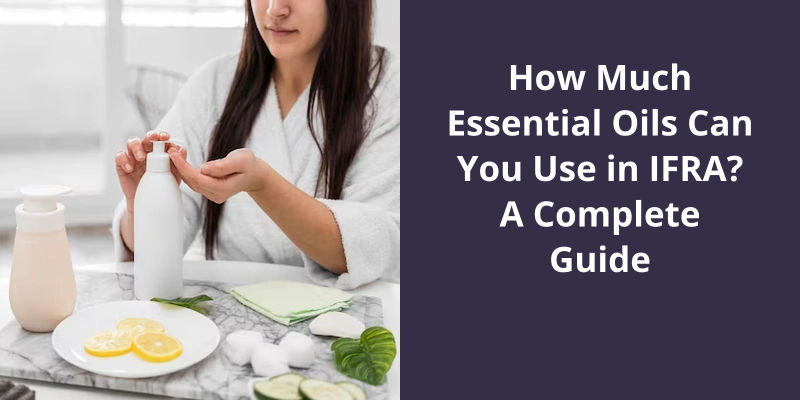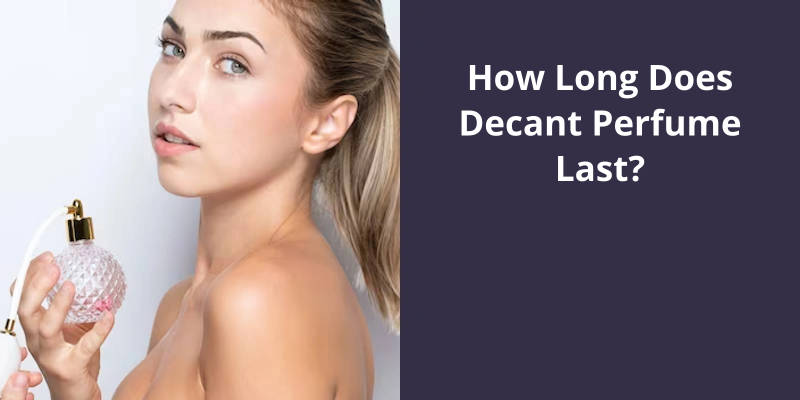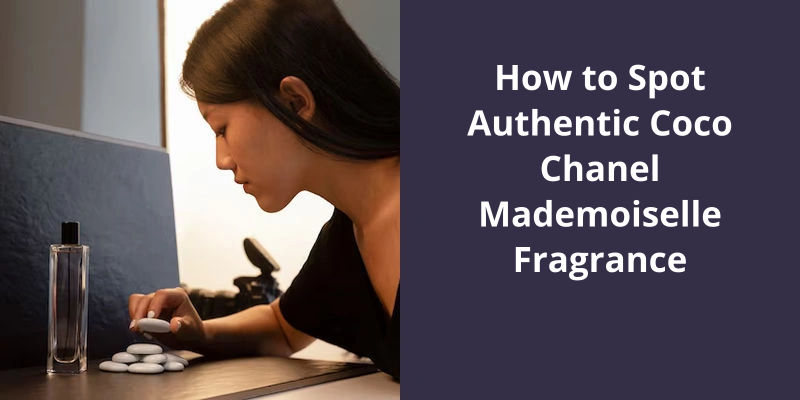The amount of essential oils you can use in accordance with the International Fragrance Association (IFRA) depends on the specific essential oil and its potential effects. IFRA sets safety standards for various oils based on research and testing. For instance, some oils might have a limit of 0.1% of the total product volume, while others could be used in higher concentration, like up to 20%. The end product use also plays a role to decide the safe level. For instance, a body lotion may be allowed a lower concentration of a certain oil than a room diffuser. It’s crucial to refer to the IFRA standards while using essential oils in any formulation so that you can ensure your product is safe for use while respecting the natural resources and sustainability of the ingredients.

What Is IFRA Certified Fragrance?
Instead, IFRA certified fragrances are made using synthetic ingredients that have been thoroughly tested and evaluated for safety. This ensures that the fragrances aren’t harmful to the environment or to human health. The IFRA certification process involves extensive testing of thousands of individual chemicals to ensure they meet strict safety guidelines.
This involves testing for skin sensitivity, carcinogenicity, genotoxicity, and other health risks. The resulting certification ensures that the fragrance is safe and non-toxic for consumers to use.
Understanding the IFRA guidelines for fragrances is crucial for anyone creating cosmetic products. While the IFRA rate reflects the safety limit of a fragrance, there are some other considerations to keep in mind to ensure that your product isn’t only safe, but also effective. In this article, we will delve deeper into the world of IFRA fragrance guidelines and the best practices to follow when using fragrances in soap making.
What Are the Guidelines for IFRA Fragrance?
These fragrances may cause skin irritation and should be avoided or used at a very low percentage. It’s important to note that different products have different safety rates, and it’s essential to refer to the IFRA guidelines specifically for the product you’re making. The IFRA guidelines take into account various factors such as the type of product, the intended use, and the concentration of the fragrance.
When working with fragrance oils, it’s important to wear gloves and safety glasses to protect your skin and eyes. Fragrance oils should also be stored in a cool, dry place away from direct sunlight. It’s recommended to label your fragrance oils with their safety rate and date of purchase to ensure that you’re using them within their recommended shelf life.
Patch tests involve applying the fragrance to a small area of skin and then waiting 24 hours to see if any redness, itching or irritation occurs.
What Are Some Common Fragrance Ingredients That Are Restricted or Forbidden by IFRA?
The International Fragrance Association (IFRA) restricts or forbids certain fragrance ingredients due to their potential safety risks. Some common examples include musk xylene, tonka bean, and oakmoss.
Source: How to Read IFRA Rates – Nurture Soap Making Supplies
When it comes to fragrances, safety in use is a top priority for both manufacturers and consumers. The International Fragrance Association (IFRA) sets strict limits for the use of fragrance ingredients, including the popular component Hedione. It’s important to know the recommended usage levels to ensure safe and effective use of these scents. Let’s delve deeper into what the IFRA limit for Hedione is and how it impacts the fragrance industry.
What Is the IFRA Limit for Hedione?
Hedione is a popular fragrance ingredient known for it’s floral and clean scent. It’s commonly used in perfumes, body care products, and household items. However, with any ingredient that comes into contact with the human body, safety is of utmost importance. Thats where the International Fragrance Association (IFRA) comes in.
IFRA is an industry organization that aims to promote the safe use of fragrances and ensure their sustainability. They establish strict guidelines and restrictions on the use of fragrance ingredients, including Hedione. The IFRA limit for Hedione isn’t restricted as such up to the 49th amendment. This means that, when used in accordance with IFRAs guidelines, Hedione is safe for use in fragrance products.
The suggested use of Hedione is up to 12.0000% in the fragrance concentrate. This percentage takes into consideration the maximum level of the ingredient that can be used for optimal scent without compromising safety.
When making whipped body butter, the addition of fragrance can take it to the next level. Whether you prefer fragrance oils or essential oils, it’s important to know the appropriate usage rate to ensure a safe and pleasant product. In general, the typical usage rate for fragrance is around 2% of the total recipe. However, it’s crucial to double-check IFRA guidelines to ensure you’re following the correct guidelines for safe use.
What Is the Usage Rate for Fragrance Oil in Body Butter?
When it comes to the usage rate for fragrance oil in body butter formulations, it’s important to remember that less is often more. While fragrance oils can add a lovely scent to your whipped body butter, they can also be overpowering if used in excess. As a general rule, a 2% usage rate for fragrance oils is recommended. This means that for every 100 grams of ingredients in your recipe, you’d add no more than 2 grams of fragrance oil.
It’s important to note that different fragrance oils will have different usage rates, and it’s always a good idea to check the IFRA guidelines for the particular fragrance oil you’re using. The International Fragrance Association (IFRA) issues guidelines for the safe usage of fragrance materials in cosmetics and personal care products, including whipped body butter. Compliance with these guidelines is important to ensure the safety of both the end user and the environment.
Again, a usage rate of around 2% is recommended. Essential oils have the added benefit of providing therapeutic benefits to the skin, as many of them have antimicrobial and anti-inflammatory properties. However, it’s important to note that certain essential oils can be irritating to the skin, especially when used in excess or on sensitive skin types.
When choosing a fragrance, consider your target audience and any potential skin sensitivities.
The Impact of Fragrance on Product Shelf Life
This topic explores how the use of fragrance can affect how long a product can sit on a shelf before it starts to deteriorate.
It’s important for companies to comply with regulations related to product safety, especially when it comes to personal care and fragrance products. The International Fragrance Association (IFRA) has a strict set of guidelines in place, including a list of substances that are banned or restricted due to potential hazards. Here are some of the substances that are banned by the IFRA.
What Substances Are Banned by the IFRA?
The International Fragrance Association (IFRA) is the industrys leading self-regulatory organization. It’s main responsibility is to ensure the safety and sustainability of fragrances used in products worldwide. The IFRA sets standards for the use of fragrance materials, including those that are prohibited or restricted.
One of the reasons certain substances are banned by the IFRA is their potential to cause harm. For instance, action cade and calamus oil contain elements that can irritate the skin and eyes. Similarly, fig leaf absolute and horseradish oil can cause severe adverse reactions in some people. For safety reasons, these substances have been completely prohibited to ensure that they don’t pose any harm to consumers.
Another reason why certain ingredients are banned is their tendency to react negatively with other compounds. For instance, mustard oil and black mustard contain chemical components that can become volatile when exposed to air. This makes them unsuitable for use in fragrance formulations. Similarly, stryax gum and sassafras oil contain high levels of safrole, which can be carcinogenic.
Additionally, the IFRA also restricts the use of certain oils. For example, bitter orange oil, cassia oil, Chinese cinnamon, and cinnamon bark can all cause skin irritation or sensitization when used in high concentrations. Therefore, the IFRA only allows them to be used in small amounts, to avoid any potential harm.
It’s important to note that the IFRAs recommendations are based on scientific evidence. Continuous research and evaluation of materials help to determine which compounds pose risks to human health and safety, thereby informing the regulation process.
How the IFRA Sets It’s Standards for Fragrance Materials
The International Fragrance Association (IFRA) sets it’s standards for fragrance materials by gathering information about the safety and potential risk factors of each ingredient. This information is then reviewed and evaluated by a panel of experts who establish guidelines for usage in various products. These guidelines aim to ensure the safety and wellbeing of consumers and the environment.
Conclusion
By adhering to these guidelines, manufacturers can ensure the safety and quality of their products, while also maintaining the integrity of the industry as a whole. For instance, certain oils such as cinnamon or clove may require a higher usage rate. As such, it’s crucial for manufacturers to thoroughly research and understand the properties of each essential oil that they use in order to ensure that they’re meeting IFRA standards. Ultimately, by following these guidelines, manufacturers can create fragrances that are both safe and effective, and that meet the expectations of their customers.





